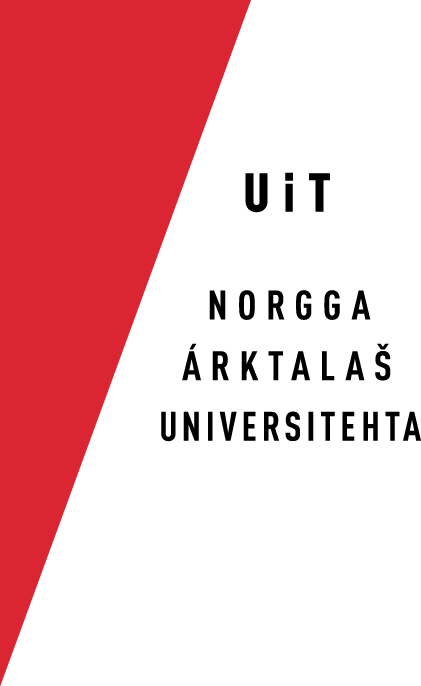root-morphology
Plains Cree morphological analyser
Definitions for Multichar_Symbols
Analysis symbols
The morphological analyses of wordforms of Plains Cree are presented
POS
- +N = Noun
- +V = Verb
- +Ipc = Indeclinable Particle
- +Prop
- +Adv
- +CC
- +CS
- +Interj
- +Phr
- +Pron
- +Num
- +Arab
- +Rom
- +PUNCT = punctuation symbols
- +LEFT = the left part of a paired punctuation symbol
- +RIGHT = the right part of a paired punctuation symbol
- +CLB = clause boundary symbols
- +Symbol = independent symbols in the text stream, like £, €, ©
- +ABBR
Nominal morphology
- +Loc Locative
- +Obv Obviative
- +Voc Vocative
- +Dim Diminutive
Particles
- +Def This is the intransitive demonstrative, i.e. the definite.
- +Indef Indefinite
- +Dem Demonstrative
- +Prox Demonstrative Proximate
- +Med Demonstrative Medial
- +Dist Demonstrative Distal
- +Pers = personal pronouns? At least it seems so based on the code
- +Interr Interrogative (who/whose/what/what kind)
- +Foc Focus particle
+Ord +Ord ordinals
Verbal MSP
- +Prs
- +Fut
- +Prt
- +Cnj
- +Int Future Intentional
- +Def Future Definite (TODO: okay to overlap with particle tag of the same name?)
- +Ind Indicative, aka Independent
- +Imp Imperative, consider deleting +Imp tag
- +Del Delayed imperative
- +Imm Immediate imperative, consider deleting +Imp tag
- +Cond TODO: Should Future Conditional be tagget Fut only? Conor: we will split the Future tags
- +1Sg first singular
- +2Sg etc
- +3Sg
- +1Pl 1Pl is exclusive plural (I, them, not you)
- +2Pl
- +3Pl
- +12Pl 12Pl is inclusive plural (I, you, ...)
- +4Sg Fourth Person inanimate singlar (used only in the VII paradigms)
- +4Pl Fourth Person inanimate plural (used only in the VII paradigms)
- +4Sg/Pl
- +5Sg/Pl
- +1SgO objective conjugation
- +2SgO
- +2Sg/PlO Used in the syncretic 2sg/pl -> 1pl in the VTA paradigms
- +3SgO
- +SgO
- +1PlO
- +2PlO
- +12PlO
- +3PlO
- +PlO
- +4Sg/PlO ambiguous 4th person (both Singular and Plural)
- +5Sg/PlO ambiguous 5th person (both Singular and Plural)
- +X Unspecified actor forms Okimāsis p. 118
Person prefix fragment features
Nominal morphosyntactic features
- +Sg singular
- +Pl plural
- +Px1Sg person prefixes for nouns
- +Px2Sg
- +Px3Sg
- +Px4Sg
- +Px1Pl obviative
- +Px12Pl inclusive
- +Px2Pl
- +Px3Pl
- +Px4Pl
- +Der/Dim diminutive derivation
- RdplW+ Reduplication Type 1 (Weak)
- RdplS+ Reduplication Type 2 (Strong)
- +Der/Com Comitative circumfix (wîci-...-m)
- +Der/X VTI x-actor to VII-1
Verb conjugation (transitivity + animacy classes)
- +AI intransitive with animate subject,
- +II intransitive with inanimate subject,
- +TA transitive with animate object, and
- +TI transitive with inanimate object.
Noun animacy and dependency classes
- +A animate noun
- +I inanimate noun
- +D dependent noun
Preverbs
Auxiliary symbols
These symbols either shape or govern the
- %> suffix border
- %< prefix border
Symbols that need to be escaped on the lower side (towards twolc):
- »7
- Literal »
- «7
- Literal «
%[%>%] - Literal > %[%<%] - Literal <
Special characters for morphophonology
- w2 mowêw: mow2
- t2 Epenthetic -t- between person prefixes and vowel-initial stems
- t3 t to s in VTA-4
- t4 t: c in VTI-1 with unspecified actor
- y2 epenthetic joiner in reduplication of vowel-initial stems
- y3 epenthetic joiner in reduplication of vowel-initial stems
- i2 vta-5i epenthesis.
- h2 Prefix in possessives
Triggers for various morphophonological phenomena
- %^EGLOT glottal stop after e, for eh- in conjunctive order
Usage tags
These tags distinguish different special-purpose analysers
- +Err/Orth tag for substandard forms
- +Err/Frag tag for word-form fragments
- +Dial tag for dialectical forms that can't be called errors
- +Use/NG not-generate, for ped generation isme-ped.fst
- +Eng indicates that this is an English form
Flagdiacritics
These are documented in Chapter 8 of Beesley/Karttunen, p. 456 zB.
For indicative, there are prefixes, so here we need one
The conjunct form always has
- @U.verb.FutCon@ Future Conditional
Prefixes with a certain phonological content:
- @U.person.NULL@
- @U.person.NI@
- @U.person.KI@
Order
- @U.order.indep@ Independent
- @U.order.cnj@ Conjunct
- @U.order.imp@ Imperative
Tense
New multichar symbols for nouns
End of new and all Multichar_Symbols
LEXICON Root is where it all starts
- NOUN_PREFIXES ;
- NOUN_IRREGULARS ;
- NOUN_VOCATIVES ;
- VerbPrefixes ;
- Pronoun ;
- Propernouns ;
- Particles ;
- Numerals ;
- Abbreviation ;
- Punctuation ;
- Symbols ;
- NON_STANDARD ;

